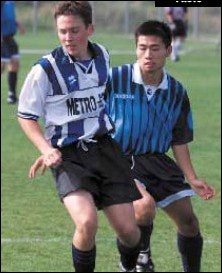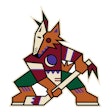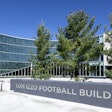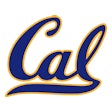Tournaments celebrate the best of amateur sports programs, but how do you ensure that organizers don't come off looking like amateurs?

The future of the 2001 Star Track, a Washington state high school track and field meet, was in doubt earlier this year, but not due to a lack of athletic facilities. Rather, the culprit was an insufficient amount of lodging.
For the past 16 years, Pasco-the city that bid to host Star Track next May-has also hosted one of the region's largest youth soccer tournaments on Memorial Day weekend, with kids from more than 100 programs streaming into the area. Two major tournaments in a city of 20,000 people on the same weekend, though, means a shortage of hotel and motel rooms-especially on Friday night.
Star Track officials asked organizers of the soccer tournament to move their event back a day to ease congestion, but as of late March that scenario seemed unlikely. A meeting between Star Track officials and the Washington Interscholastic Activities Association was slated for the end of March to determine whether Star Track should be moved to an alternative site.
"The soccer people said they were the tournament in town, so why should they move?" John Crawford, manager of a local track meet and the man who secured the Pasco bid for Star Track, told The News Tribune of Tacoma. "To tell you the truth, I don't think this can be resolved."
Scheduling dilemmas of all sorts-even inexplicable ones like that occurring in Pasco-are just one glitch in the planning and execution of successful tournaments. And it's not only the usual suspects-high school and college sports administrators, and community park and recreation directors-who run into trouble. Administrators of amateur sport leagues, club sports and even intramural activities also suffer tournament trials and tribulations. Insufficient staffing and competition with larger organizations for facility use are common challenges.
"We have more participants than we have facilities," says Phil Kelly, associate director of intramural activities for Brigham Young University, which boasts one of the largest such programs in the country, with more than a third of the student body participating in 30 activities. "At most universities, that's not the case. It's kind of nice, in a way, to know our programs are popular. But it's sad, too, because other people can't play. And there are some nights we can't play in certain facilities" because of scheduling conflicts with BYU's organized sports programs.
But Kelly and countless other program administrators across the country have found ways to develop exciting (and sometimes unconventional) tournaments for their participants. "All you've got to do is tell me I can't, and I'll work harder so I can," says Ken Marks, director of the two-year-old, forprofit 4 on 4 of Jax men's flag football league in Jacksonville, Fla. "My guys are going to judge the league by what they're getting for their money, so I have to be creative when it comes to tournaments."
Marks would be the last guy to share the detailed secrets of tournament success-"I can't be teaching people how to compete with me, because this is what I do for a living," he says-but the schedule of 4 on 4 of Jax events during the first half of 2000 is intriguing, to say the least. Among the two most distinctive were April's Between Seasons Tournament Series and this month's Night Owl 2000, a 20-hour flag football marathon during which players and their families are encouraged to pitch tents or bring their campers to the tournament site. Both events cost teams less than $200 to enter.
The league, which boasted more than 700 players in its most recent 10-game Saturday program and a shorter Sunday program, leases its own 37-acre, ninefield complex for weekly games. But many tournaments are held at other venues around the city. Part of the Between Seasons event, for example, was expected to feature round-robin play on a Saturday, with plans calling for the top 12 teams to advance to a roundrobin tournament the next day at the Jacksonville Coliseum, home of the new Arena Football2 League's Jacksonville Tomcats. All tournament participants also received season tickets to the Tomcats' inaugural season.
The round-robin Night Owl 2000 also will take place at an outside site, Trinity Christian Academy Football Stadium on the campus of the city's Trinity Baptist Church. To promote the church, Trinity officials agreed to host more than 100 teams-but not all of them from the 4 on 4 of Jax league. A regulation-size football field will be converted into five regulation-size flag football fields, which will see nonstop action for 20 hours, Marks says. A pizza buffet will kick off the event, while a youth tournament gets under way early the next morning. The church will provide concessions, rest rooms and shower facilities.
Both tournaments were planned and organized by Marks and business partner Vanja Zec-Bobek, a world-class soccer player and a top player in 4 on 4 of Jax. Having one or more individuals devote several hours a week to a league and its tournaments makes a huge difference, if an organization can swing it. Just ask Lance Calloway, executive director of the nonprofit Whatcom Soccer Commission in Bellingham, Wash. One of the reasons the three major youth tournaments hosted by WSC each year are considered some of the best-run in the Northwest is because the commission is able to employ three full-time staff members.
Well-maintained fields, an intense marketing effort to recruit teams, strict enforcement of game rules and a profit strategy that feeds all money WSC earns from concessions, team entry fees and vendors back into maintaining 12 outdoor fields and an indoor facility might have something to do with its success, too.
For the past decade, WSC has hosted the Baker Blast (featuring 120 or so boys' and girls' teams, ages 12 to 19), and the high-level Rimland Pacific Cup for girls and Pacific Coast Challenge for boys. Teams from several neighboring states pay an entry fee of $300 or $325 to play three games each in the weekend-long events. Last year, the trio of tournaments brought $4.2 million into the community, Calloway says.
But what about leagues in which at least one full-time staff member just isn't feasible? The three-year-old Niagara Falls (Ontario) Red Raiders Basketball Association, part of the Basketball Ontario organization, pulls off four annual tournaments in youth categories ranging from 9-and-under to 16- and 17-year-olds with volunteer parents, friends and relatives.
In fact, the tournaments-played in November, January, February and March-each take at least 30 volunteers to run. Volunteers are crucial to an organization like the Red Raiders because it costs $17,000 a year to rent space and practice at several area high school gymnasiums, according to Bill Rootes, Red Raiders president. And this year, because the local school board began charging user fees to host tournaments at public school gymnasiums, the Red Raiders were forced to cut the number of tournament teams after scaling back operations primarily to facilities at two private schools.
Dedicated staff members, spiffy grounds and intriguing events aren't the only keys to successful tournaments, though. Many aspects participants and spectators take for granted-concessions, referees and security matters-become magnified when they're absent or insufficient.
"You have to pay attention to detail," Rootes says. "People come into your town, and they want to know where they can eat. We post signs everywhere explaining everything." Lists of the better restaurants in town, area attractions and shopping centers help make out-of-town visitors feel welcome. Having food and beverages available on-site is crucial, too.
Concessions stands can offer any variety of sustenance-from burgers and hot dogs grilled by volunteers to vendors who sell ice cream, pizza, candy and other goodies. WSC's Calloway recently signed up a burrito vendor to work his soccer tournaments, and WSC takes 10 percent of the gross revenues.
When spectators aren't eating, they're watching the action, and if the games aren't any good, they likely won't stick around just to enjoy another sausage sandwich. Making sure tournaments field as many quality teams and referees as possible is another vital element of successful events, as is ensuring the safety of spectators and players.
In Calloway's case, he uses money from sponsorships with AT&T and Puma, tournament program ad revenues and funding from an area hotel-motel tax to solicit better teams each year through advertising in state soccer association newspapers. He also hopes to offer entry fee incentives to various associations' championship teams. His goal is to make the tournaments among the top soccer destinations in the country. "I'm always looking at trying to bring the level up," he says.
While top players vie for titles, several WSC volunteer field marshals patrol the sidelines, keeping an eye on spectators. Permitting marshals to remove from the grounds loud and obnoxious parents and other fans who disrupt the flow and enjoyment of the games is a tournament policy that gives WSC credibility among players, coaches, outside associations and other spectators, Calloway says.
He also draws some of the region's top referees, thanks to the relationships Calloway's forged with various officials' organizations in the Northwest and Canada. Part of WSC's budget allows for six double rooms each tournament to house officials from outside the area. High-caliber refs usually mean well-called games, but for instances in which coaches and players dispute a call, WSC has developed a judiciary committee of sorts that reviews both sides of a controversial call within 20 minutes of the conclusion of the match. The call then is dismissed or, more likely, upheld-resulting in possible player suspensions for a game or the remainder of the tournament.
Red Raiders tournament organizers haven't been as fortunate in finding decent game officials, according to Rootes. "The one thing we have no control over is the referees," he says. "It's basically the same thing in every town: Some are good and some are bad." Nevertheless, they all must be paid-$27 a game, in this case. Rootes claims he spends more than $3,000 on referee wages during one 30-team tournament.
Marks, meanwhile, attracts (and keeps) some of Jacksonville's prime flag football players by enforcing a no-fighting policy. "We've probably put on close to 3,000 league and tournament games in two years," he says. "We've only had three fights. You throw a punch, and you've just decided not to play in my league for a season. I'll forgive you and invite you over to my house for dinner, but you can't play, because I don't expect my other players to have to forgive you."
Marks also encourages area businesses to sponsor the league by providing members with discount coupons for chicken wings, athletic shoes, pitchers of beer and other things men love. He prefers that sponsors provide some benefit to players rather than pitch in money for league operations. Teams that donate fencing or other league amenities are offered lifetime memberships. Marks also makes playing in the league more desirable by announcing the names of the previous week's most valuable players on commercials that air on a local AM sports talk-radio station. He also posts weekly stats, schedules, news and photos on the 4 on 4 of Jax Web site (www.4on4.com).
In fact, the Internet continues to transform the way tournaments are run-although more so for participants than spectators. Most grassroots athletic organizations now have Web sites-some more detailed and entertaining than others. Registration information and forms, rosters, schedules, results and contact names are common features of most sites. For example, the Red Raiders' site (www.nfredraiders.com) also lists the association's objectives on its home page, a breakdown of age groups and team divisions, a Red Raiders history, a listing of area lodgings, maps to various venues and several basketball-related links.
Of course, the snazziest Web sites, tightest security, most talented players, most experienced refs and most strategic marketing plans mean little if tournament teams aren't matched accordingly. Scheduling remains among the most tedious tasks for tournament organizers. As scheduling software programs continue to proliferate, though, more events are bound to be scheduled with a computer screen and keyboard rather than paper and pencil. For now, some tournament planners still prefer to arrange games the traditional way.
Rootes argues that his background knowledge of which teams deserve to be pitted against each other is superior to that of a computer program. Marks agrees, adding that team availability factors also enter into his decision to scratch out schedules by hand. He says he has yet to find a program that can schedule games around particular teams' conflicts.
In some cases, software programs simply can't accommodate the sheer number of teams involved in certain tournaments. At BYU, for example, more than 450 teams participate in intramural basketball tournaments, and eventual champions must sometimes wend their way though 10 games in an elimination-tournament bracket. For that reason, BYU schedules games on its own 15-year-old in-house computer system. Unfortunately, Kelly says, programmers did not make the system Y2K compliant. The program is undergoing an overhaul this season, while BYU intramural teams operate the 1999-2000 season on a calendar-complete with Leap Day-from 1972.
Scheduling tournaments may come easier to some organizers than to others. "We've got thousands of tournaments being run across North America every day, and lots of people are trying to figure out what happens if A plays B and C plays D," says John Byl, head of the physical education department at Redeemer College in Ancaster, Ontario, and author of Organizing Successful Tournaments, the second edition of which was published last year by Human Kinetics. "Why shouldn't one person just do it for everybody?"
Byl's book focuses entirely on the scheduling aspect of tournaments and presents descriptions of and draw sheets for the five major types of team and individual tournaments-singleand double-elimination, multilevel, round-robin and extended events.
The impetus for the book came when Byl was teaching a class about administration of intramural athletics and could not find a worthy textbook-so he wrote his own. The scheduling models he uses in the book can be converted into computer software programs, he claims, adding that he also tests manufacturers' systems for glitches. "People choose a tournament format because they're familiar with it, not because it best satisfies the goals of the tournament," he says. For example, a doubleelimination tournament ensures that every team will play at least twice, but that's all some teams will play, he says. A round-robin double split, with teams split into two divisions, allows more games for everyone, Byl says.
Regardless of tournament format, the main objective is to strive toward making each tournament better than the previous one-in every way conceivable. As Calloway says, "Never be satisfied." Just remember Star Track's dilemma and be sure there are enough hotel and motel rooms in town to accommodate your tournament-and anybody else's.
































